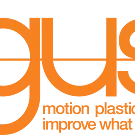언어 변경 :
3D 프린터의 정밀하고 안정적인 기어박스 -촬영기기를 위한 비용 효율적인 구성품
사용된 igus® 제품에 대한 자세한 정보
3D 프린팅 컴포넌트의 다른 적용 사례는 여기에서 확인할 수 있습니다:
상담
문의사항에 개별적으로 답변해 드리겠습니다.

igus® Korea 한국이구스032-821-2911이메일 작성
배송 및 상담
개인별:
월~금 오전 9시 - 오후 6시.
온라인:
24시간

개인별:
월~금 오전 9시 - 오후 6시.
온라인:
24시간